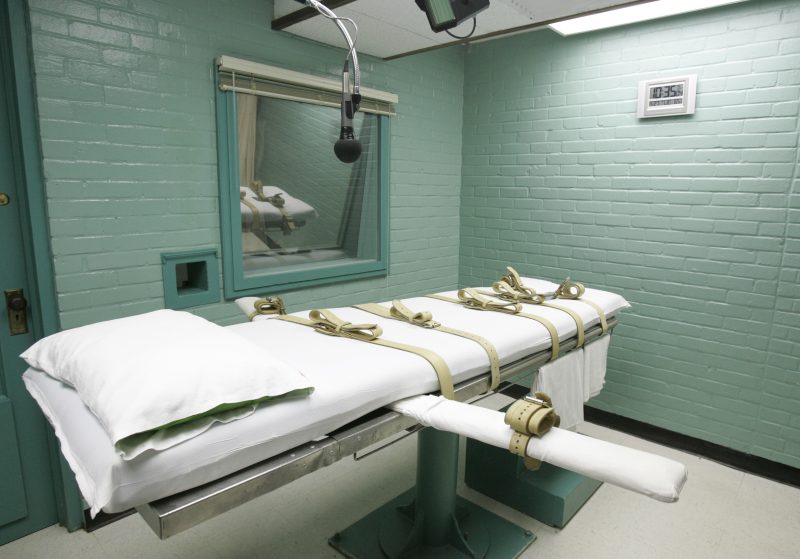After Louis Jones was executed by the U.S. government in 2003, it seemed quite possible that he might be the last federal prisoner to suffer that fate. For 16 years, prisoners on federal death row remained there, their status little different than those who had been sentenced to life.
Then Donald Trump was elected president and, in 2020, focused his reelection campaign on crime. On July 14, 2020, the federal government resumed executions, putting Daniel Lee to death in Indiana. Two days later, Wesley Purkey met the same fate. The day after, it was Dustin Honken. Between July 2020 and when Trump left office the following January, the federal government executed 12 death-row prisoners.
Trump’s push for executions was deeply rooted in his politics. But that’s fitting: The death penalty is now almost exclusively the province of America’s red states.
New data published by the Death Penalty Information Center (DPIC) makes this clear. Over the past 10 years, only 16 percent of executions occurred in states that Joe Biden won in 2020. Most of those were in Arizona and Georgia, states that are more purple than blue. Four occurred in Virginia; Virginia has since banned the death penalty.
All of the states in which the death penalty is still allowed and where there have been executions in the past 10 years were Republican-voting states in 2020, according to DPIC.
There are still a number of inmates being held on death row in blue states. In fact, just under half of those held on death row in the states are held in blue states. It’s just that those states are less likely to actually execute the prisoners. In Oregon, for example, the most recent execution was in 1997. This month, outgoing Gov. Kate Brown (D) commuted the capital sentences of the state’s death-row inmates.
The most inmates on death row are in California, which hasn’t executed anyone since 2006. The most death-row inmates relative to the state’s population is in Alabama.
The national trend is away from executions — and away from death sentences. DPIC data indicate that there have been fewer people sentenced to death over the past three years combined than had been sentenced to death in any year prior to 2015 since the Supreme Court allowed executions to resume.
There’s a wide divide between the willingness of states to sentence convicts to death and to actually execute them. Consider the difference between California and Texas below; both have sentenced hundreds of people to death, but only Texas actually carries out the punishment.
Unsurprisingly, executions trail sentences. But that also means that sentences for capital offenses were more likely to occur when crime was high. By the time appeals were exhausted, crime had declined across the country and the appetite to effect the harshest possible punishment had waned.
Until the tumultuous summer of 2020 and the presidency of Donald Trump. The hard-right Republican president who at one point warned that a shooting was an inevitable response to looting embraced the death penalty as a reflection of his politics and his long-standing ideology.
That was demonstrated in the 1980s when, in response to a violent rape in New York City’s Central Park, Trump called publicly for New York to reinstate the death penalty. The teenagers ultimately arrested for that crime were later exonerated — a reminder that the death penalty cannot be reversed even if it might need to be.








